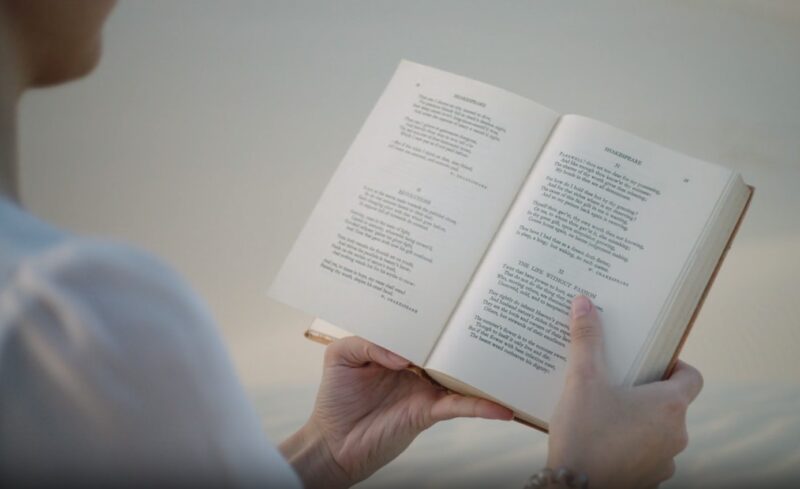Poetry, with its unique blend of emotion, rhythm, and imagery, stands apart as a deeply expressive form of literature. Central to its structure and impact are stanzas, the core building blocks of poetry. Stanzas are to poems what paragraphs are to prose, offering structure, rhythm, and a framework for ideas.
However, they are much more than mere structural elements; they are vessels of meaning, rhythm, and sound, playing a crucial role in how a poem is interpreted and experienced.
Defining the Stanza

At its most basic, a stanza is a grouped set of lines within a poem, typically separated from other such groups by a blank line. Stanzas can vary in length, ranging from two lines (known as a couplet) to several lines. The structure of a stanza is determined by its rhyme scheme and meter, which in turn influence the rhythm and flow of the poem. This deliberate structuring is what differentiates stanzas from random groupings of lines.
The Rhyme and Rhythm of Stanzas
Rhyme and rhythm are essential components of stanzas. The rhyme scheme, or the pattern of end rhymes, lends music and memorability to the poem. It’s the rhythmic quality that often defines the type of stanza. For instance, a Shakespearean sonnet ends in a rhymed couplet, a distinctive feature of this form. Similarly, the rhythm, often dictated by a specific meter, gives the poem its beat and tempo, guiding the reader’s vocal and emotional journey through the text.
Types of Stanzas in Poetry
There are several types of stanzas commonly found in poetry, each with its characteristics and conventions. For instance, couplets consist of two lines that usually rhyme, while tercets are three-line stanzas. Quatrains, comprising four lines, are the most common stanza form in English-language poetry. Each of these types can employ various rhyme schemes and meters, further diversifying the range of expression possible within these structures.
The Function of Stanzas
Stanzas perform several functions in a poem. They can create a pause or break in the narrative, introduce a new idea or theme, or provide a change in perspective or tone. The end of a stanza often signifies a moment of reflection or transition, leading the reader to a deeper understanding or a different viewpoint. The way a poet structures the stanzas can profoundly affect the poem’s pacing, tone, and emotional impact.
Stanzas and the Art of Meaning-Making

Beyond their structural role, stanzas are integral to the meaning-making process in poetry. They can encapsulate a single image or idea, making it more impactful. The white space around stanzas gives readers a moment to ponder, enhancing the depth and resonance of the words. In narrative poems, stanzas can be used to advance the story, each one acting as a stepping stone in the unfolding plot.
Innovations and Variations in Stanza Forms
Poets often experiment with stanza forms to create new effects or express unique ideas. Free verse poems, for instance, might eschew traditional stanzaic structures altogether, opting instead for irregular line groupings based on thematic or emotional content. Other poets might invent their own stanza forms, playing with line lengths, rhyme schemes, and rhythms to suit their expressive needs.
Exploring the Emotional Impact of Stanzas

The emotional impact of a stanza in a poem cannot be overstated. Each stanza, with its unique structure and content, can evoke a range of emotions in the reader. The way a stanza ends, particularly if it concludes with a powerful line or image, can leave a lasting impression, influencing the reader’s emotional journey through the poem. The pacing of the stanzas, whether rapid and urgent or slow and contemplative, also plays a significant role in conveying the poem’s mood and tone.
The Visual Appeal of Stanzas
The visual aspect of stanzas contributes significantly to the overall aesthetic of a poem. The way stanzas are arranged on the page, their length and symmetry, can create a visual rhythm that complements the textual rhythm. This visual element is particularly noticeable in forms like concrete poetry, where the shape and arrangement of stanzas are integral to the poem’s meaning.
Stanzas in Different Poetic Traditions
Different poetic traditions across the world have developed unique approaches to stanzas. For example, in classical Arabic poetry, the qasida, a form of ode, often features a uniform stanza structure throughout. Japanese haiku, on the other hand, is a terse three-line form that captures a moment’s essence. These diverse traditions highlight how different cultures have embraced and adapted the concept of the stanza to suit their poetic needs and aesthetic sensibilities.
Stanzas and Modern Poetry
In modern and contemporary poetry, the role and structure of stanzas have evolved. Modernist poets often experimented with free verse and open-form stanzas, breaking away from the strict metrical and rhyme patterns of traditional stanza forms. This experimentation allowed for greater freedom in expression and the ability to capture the complexities of modern life. Contemporary poets continue this trend, often using stanza breaks innovatively to convey fragmentation, disjunction, or a stream of consciousness.
Teaching and Understanding Stanzas

In the context of teaching poetry, understanding stanzas is crucial. It helps students appreciate the technical aspects of poetry and how they contribute to its overall impact. Analyzing stanza structures, rhyme schemes, and rhythms can deepen students’ understanding of a poem’s themes and emotional undertones. Moreover, encouraging students to experiment with different stanza forms in their writing can enhance their creative expression and appreciation for poetic craftsmanship.
The Future of Stanzas in Poetry
As poetry continues to evolve, the use and perception of stanzas will undoubtedly change. Digital media and online platforms offer new ways of presenting and experiencing poetry, which may influence how stanzas are structured and perceived. However, regardless of the medium, the stanza will likely remain a fundamental element of poetry, continuing to provide structure, rhythm, and meaning in this ever-evolving art form.
| Type of Stanza | Example | Rhyme Scheme |
|---|---|---|
| Couplet | True wit is nature to advantage dressed;
What oft was thought, but ne’er so well expressed. |
AA |
| Tercet | Whose woods these are I think I know.
His house is in the village, though; He will not see me stopping here. |
ABA |
| Quatrain | Hope is the thing with feathers
That perches in the soul, And sings the tune without the words, And never stops at all. |
ABAB or AABB |
| Quintain | The curfew tolls the knell of parting day,
The lowing herd wind slowly o’er the lea, The plowman homeward plods his weary way, And leaves the world to darkness and to me, Now fades the glimmering landscape on the sight. |
ABABB |
| Sestet | When I consider how my light is spent
Ere half my days in this dark world and wide, And that one talent which is death to hide, Lodged with me useless, though my soul more bent To serve therewith my Maker, and present My true account, lest he returning chide. |
ABABCC |
| Octave | How do I love thee? Let me count the ways.
I love thee to the depth and breadth and height My soul can reach, when feeling out of sight For the ends of being and ideal grace. I love thee to the level of every day’s Most quiet need, by sun and candle-light. I love thee freely, as men strive for right; I love thee purely, as they turn from praise. |
FAQs
Can a poem consist of a single stanza, and how does that affect its interpretation?
Yes, a poem can consist of just one stanza, known as a monostich if it’s a single line or a stichic if longer. In such cases, the entire poem’s message, theme, and rhythm are encapsulated within this solitary stanza. This can lead to a concentrated, powerful expression of ideas, requiring readers to delve deeply into each line and word for interpretation. Single-stanza poems often leave a strong, singular impression and can be particularly impactful due to their brevity and intensity.
How do stanzas contribute to the creation of suspense or surprise in a poem?
Stanzas can create suspense or surprise through their strategic structuring. A poet might end a stanza on a cliffhanger, building anticipation for what follows. Alternatively, the beginning of a new stanza can introduce an unexpected twist or revelation, surprising the reader and altering the poem’s trajectory. This use of stanzas manipulates pacing and reader expectations, enhancing the poem’s overall dramatic effect.
Are there specific rules for naming different stanza forms based on their line count?
Yes, there are traditional names for stanzas based on the number of lines they contain. For example, a couplet has two lines, a tercet has three, a quatrain four, a quintain five, a sestet six, a septet seven, and an octave eight. Beyond eight lines, stanzas are often simply referred to by their line count, like a nine-line stanza or a ten-line stanza, though some forms like the Spenserian stanza (nine lines) have specific names.
Do stanzas play a role in the visual representation of concrete poetry?
In concrete poetry, where the visual aspect is as important as the textual, stanzas can play a significant role. They can be arranged to form shapes or patterns that visually represent the poem’s theme. The layout of stanzas in concrete poetry often complements and enhances the poetic message, making the spatial arrangement of words a part of the poem’s meaning.
How do irregular or free-form stanzas differ from traditional stanza forms?
Irregular or free-form stanzas break from traditional patterns of rhyme and meter. They don’t follow a set structure and often vary in line length and rhythm within the same poem. This flexibility allows poets to align the stanza’s form more closely with the poem’s content, mood, and tone, often leading to a more organic, spontaneous-feeling expression.
Can stanzas be used to convey a poem’s setting or atmosphere?
Yes, stanzas can effectively convey a poem’s setting or atmosphere. The arrangement and flow of stanzas can mirror the poem’s physical or emotional landscape. For example, short, choppy stanzas might reflect a tumultuous setting, while longer, flowing stanzas can evoke a more serene atmosphere. The stanza structure can subtly influence the reader’s perception of the poem’s setting and mood.
Final Words
In conclusion, stanzas are fundamental to the art and craft of poetry. They are not just structural units but are imbued with meaning, emotion, and aesthetic value. From the classic forms to modern innovations, stanzas represent the diversity and adaptability of poetry. As we continue to read, write, and explore poetry, the stanza remains a central aspect of our journey through this rich and expressive literary landscape.

